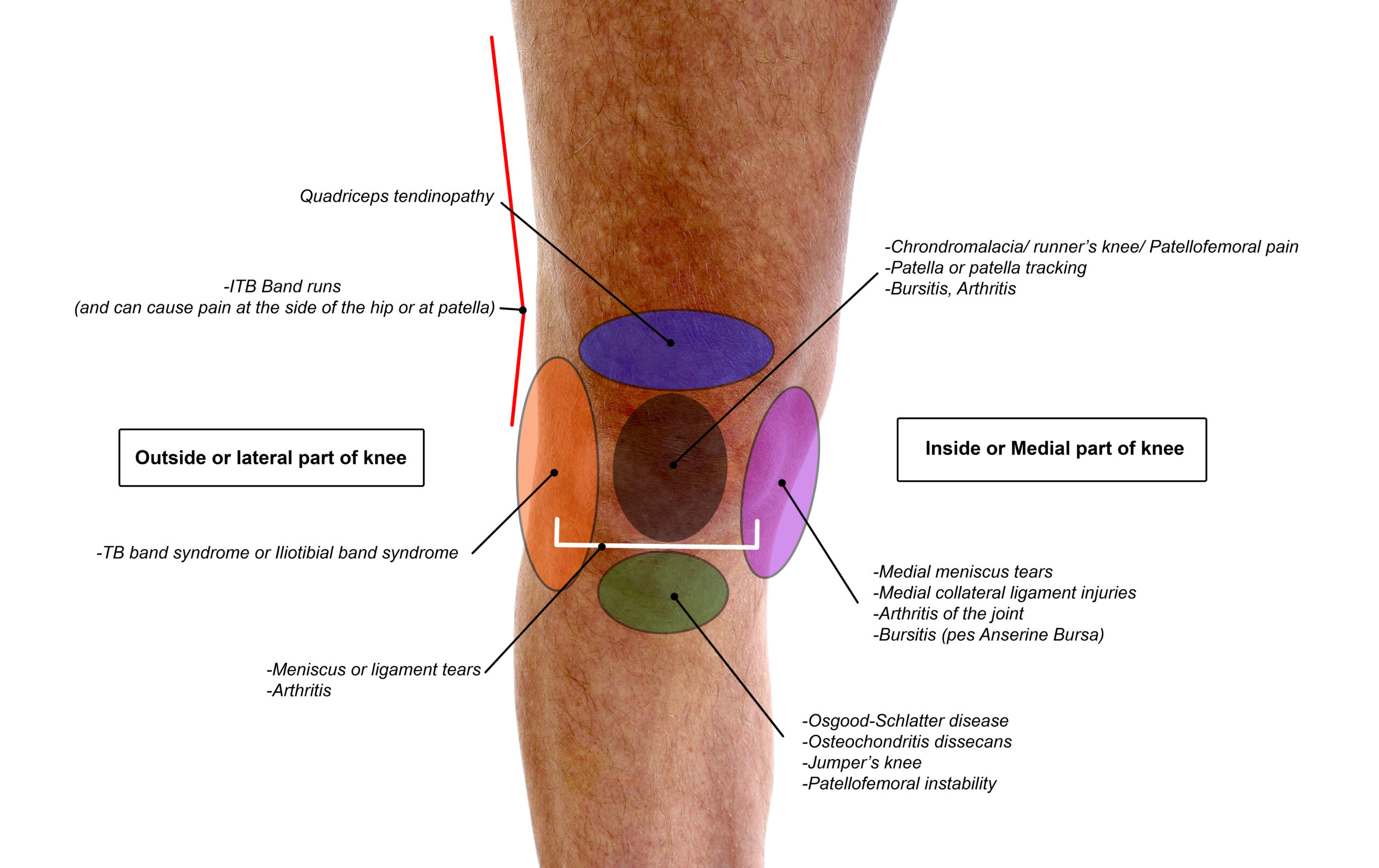Knee Pain
Bearing the Load: Decoding the Ache – A Comprehensive Guide to Knee Pain
Knee pain is a pervasive issue affecting individuals across various age groups and backgrounds. The epidemiology of knee pain in the U.S. adult population is a significant health concern given the prevalence and impact of musculoskeletal conditions affecting the knee joint.
- Prevalence:
- Knee pain is highly prevalent, affecting millions of adults in the United States.
- According to the Centers for Disease Control and Prevention (CDC), osteoarthritis, a common cause of knee pain, affects over 32.5 million U.S. adults, with the knee being one of the commonly affected joints.
- Other causes of knee pain include injuries, inflammatory conditions, and overuse, contributing to the overall high prevalence.
- Age and Gender Distribution:
- Knee pain tends to increase with age due to the wear and tear on the joint over time.
- Osteoarthritis, a primary cause of knee pain, is more prevalent in older adults.
- Studies show that women are generally more prone to knee pain and osteoarthritis than men, particularly after the age of 50.
- Risk Factors:
- Obesity is a significant risk factor for knee pain and osteoarthritis. Excess body weight places additional stress on the knee joint.
- Physical inactivity or a sedentary lifestyle is associated with an increased risk of knee pain.
- Occupational factors, such as jobs requiring repetitive knee movements or heavy lifting, can contribute to the development of knee pain.
- Ethnic Disparities:
- Some studies suggest variations in the prevalence of knee pain among different ethnic groups.
- African American and Hispanic populations may have different rates of knee pain and related conditions compared to the non-Hispanic white population.
- Impact on Quality of Life:
- Knee pain can significantly impact an individual’s quality of life, leading to limitations in mobility, decreased physical activity, and potential psychological distress.
- Chronic knee pain is a leading cause of disability in the U.S., contributing to reduced productivity and increased healthcare utilization.
This rest of this article aims to unravel the complexities surrounding knee pain, exploring its causes, diagnostic steps, and a spectrum of treatment options, with a particular focus on interventional modalities that offer relief and restore mobility.
Causes
- Osteoarthritis: The most common cause, characterized by the degeneration of joint cartilage.
- Rheumatoid Arthritis: An autoimmune condition leading to inflammation of the knee joint.
- Meniscus Tears: Injuries to the cartilage that cushions the knee joint.
- Ligament Injuries: Tears or strains in ligaments, such as the anterior cruciate ligament (ACL).
- Tendonitis: Inflammation of tendons surrounding the knee.
- Bursitis: Inflammation of the bursae, fluid-filled sacs that reduce friction in the knee.
- Post-Knee Replacement Syndrome: Ongoing chronic pain after knee joint replacement surgery.
- Referred Pain: Certain spinal nerve impingement conditions may present as thigh and knee pain.
Steps of Diagnosing a Cause
- Medical History: Detailed discussion of symptoms, previous injuries, and family history.
- Physical Examination: Evaluation of the knee’s range of motion, swelling, and tenderness.
- Imaging Studies: X-rays, MRIs, or CT scans to visualize the internal structures of the knee. Rarely, arthrograms are needed.
- Laboratory Tests: Blood tests to identify inflammatory markers or underlying conditions.
Location of Pain and Related Source
- Anterior Knee Pain: Often associated with patellofemoral pain syndrome or quadriceps tendonitis.
- Medial Knee Pain: Common in conditions like osteoarthritis or medial meniscus tears.
- Lateral Knee Pain: Seen in lateral meniscus tears or iliotibial (IT) band syndrome.
- Posterior Knee Pain: May indicate issues with the posterior cruciate ligament (PCL) or hamstring tendons.
Treatment Options
- Rest and Physical Therapy: Strengthening exercises and stretches to improve knee function.
- Medications: Pain relievers, anti-inflammatories, or disease-modifying drugs depending on the underlying condition.
- Bracing and Supportive Devices: Assistive devices to alleviate pressure on the knee joint.
- Injections: Various types of injections for pain management and inflammation reduction.
Interventional Modalities
- Steroid Injections: Administering corticosteroids directly into the knee joint for rapid pain relief and reduced inflammation.
- Hyaluronidase Injections: Hyaluronic acid injections to supplement joint fluid and improve lubrication.
- PRP Injections: Platelet-rich plasma injections to stimulate tissue repair and reduce inflammation.
- Genicular Radiofrequency Ablation (RFA): Targeted thermal energy application to disrupt pain signals in the genicular nerves surrounding the knee.
- Dorsal Root Ganglion (DRG) Stimulation: Electrical stimulation of nerve roots to modulate pain signals.
In short, knee pain is a multifaceted issue with a range of potential causes, demanding a nuanced and personalized approach to diagnosis and treatment. While conservative methods play a crucial role, interventional modalities, such as steroid injections, hyaluronidase injections, PRP injections, genicular RFA, and DRG stimulation, offer innovative solutions for those seeking sustained relief and improved functionality. Understanding the intricacies of knee pain and collaborating with healthcare professionals can pave the way for effective management and a return to an active, pain-free life.
References:
- Felson, D. T., Naimark, A., Anderson, J., Kazis, L., Castelli, W., & Meenan, R. F. (1987). The prevalence of knee osteoarthritis in the elderly. Arthritis & Rheumatism, 30(8), 914–918.
- McAlindon, T. E., Bannuru, R. R., Sullivan, M. C., Arden, N. K., Berenbaum, F., Bierma-Zeinstra, S. M., … & OARSI Guidelines Committee. (2014). OARSI guidelines for the non-surgical management of knee osteoarthritis. Osteoarthritis and Cartilage, 22(3), 363–388.
Further Reading:
- Hunter, D. J., Schofield, D., & Callander, E. (2014). The individual and socioeconomic impact of osteoarthritis. Nature Reviews Rheumatology, 10(7), 437–441.
- Saltzman, B. M., Leroux, T., & Meyer, M. (2018). The therapeutic effect of intra-articular normal saline injections for knee osteoarthritis: a meta-analysis of evidence level 1 studies. The American Journal of Sports Medicine, 46(1), 224–233.



